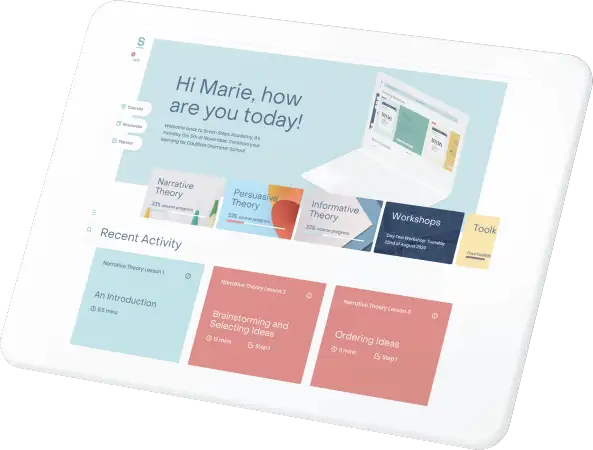For many of us, the return to the school year will taste of ash.
Ash in our mouths as we answer the questions about how homes and forests burned.
Ash in our hearts as we mourn people and places, and millions of dead animals.
Ash in our memories with images and memories of heat, fear and smoke.
Young and old, near and far, many in learning communities will bear marks of the recent bushfires.
Students may need to process what they have seen and heard – whether directly in their home or community, or indirectly via the news or listening to their family’s conversations. Writing, like all creative pursuits, can be one of the many ways we start to heal together.
While we can’t wipe away the ash, we can offer these few small ideas for writing and learning activities in a community directly or indirectly affected by this year’s fires.
Five learning projects to help students be positive and proactive after fires

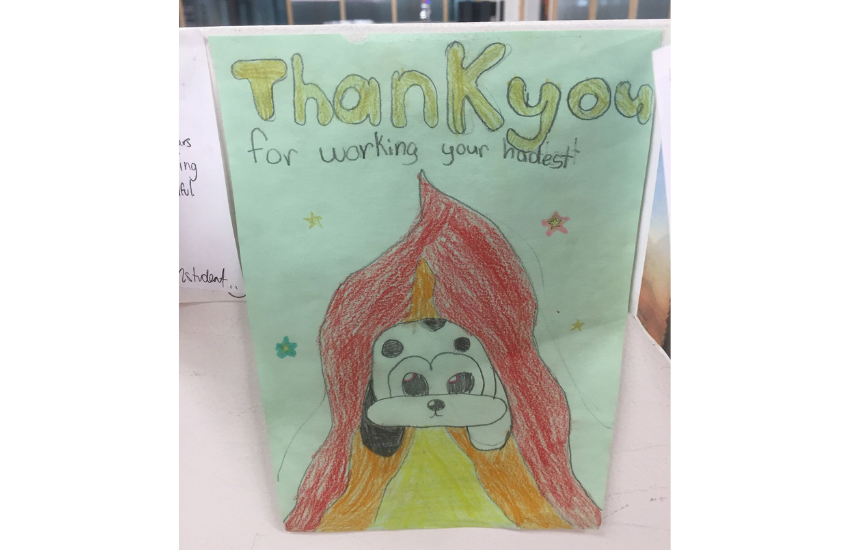
1. Gratitude
Send a class card, poster or letter/s to your local fire service, ambulance and emergency response services. Fire and emergency responders treasure thank you messages. Discuss as a class what you and the community are grateful for, and who you might thank together.
- Maybe the students would prefer to thank community, food bank, charity and wildlife rescue volunteers? Many, many people have a hand in fighting fires, front line or not.
- Prompt students to research local or national organisations, perhaps those who may not have been thanked yet.
Resources to share with students:
- Why Firefighters Treasure Thank You Letters
- The Today Show: Kids are writing beautiful messages for firies (includes addresses for CFA and fire services headquarters)
2. Foster a forest
Plant a small forest and learn how to care for it
Revegetation will be key to the survival of Australian animals. Students could plant trays of native seeds into tube pots. Fifty pots fit into one tray or box, so it’s feasible to foster a small forest. This can be a longer-term project of hope for students.
Tree growing has specific seasons, and researching the needs of trees (plus the specific species indigenous to your area) is a great project for students to hone their research skills, which can link to informative writing.
Check out tree planting charities in your State (or ask your Council who does this in your region).
Resources:
- Greening Australia – national programs to revegetate, repopulate and provide seed across the country
- Landcare Australia – national organisation with local groups and working bees
- The Tree Project – Victorian charity community tree-growing project
- Trees for Life – South Australian charity community tree-growing project
3. Adopt an animal
Be a custodian for wildlife
Many students are focused on the destruction of Australian wildlife and habitat. Help them make positive moves by finding out more about their favourite wild creatures. Students can research and write or present projects on wildlife rescue, or pen procedural texts on how to make pouches for orphaned joeys.
Older students can review and seek to understand the lists of veterinary and medical supplies wildlife rescue organisations are asking for and write persuasive advertisements asking the public to help. Many charity rescue organisations encourage supporters to adopt an animal.
This list should not be taken as comprehensive – you may also want to look for regional and specialist registered charitable organisations in your State. These sites have reliable information about animals and their care after a catastrophe.
Resources:
- ABC Splash – Visit a wombat orphanage – Goongerah Wombat Orphanage narrowly escaped the Gippsland fires in early January 2020. This video is from 2016: http://abcspla.sh/m/2169828
- WIRES – NSW: https://www.wires.org.au/
- Wildlife Victoria: https://www.wildlifevictoria.org.au/
- Australia Zoo – Animal Rescue Unit Queensland: https://www.australiazoo.com.au/our-animals/animal-news/666-rescue-unit-climbs-high-to-save-koalas
- Threatened Species Conservancy: https://www.tsconservancy.org/
- Zoos Victoria – Wildlife Rescue page: https://www.zoo.org.au/fire-fund/
4. Campaign for climate
Make your voice heard
The big issues are the best for persuasive writing and speaking, and this summer has a few mega-topics for real debate.
Beloved Australian author, Jackie French, has written an opinion piece about what has to happen next. With older students, read her words and debate the questions she raises in her list ‘What do we need?’.
- The Sydney Morning Herald – Jackie French pens a letter to Australia, Jan 9, 2020
5. Read and reflect
Stories help us heal
Whether near or far from the fires, stories will help students. Jackie French says ‘Don’t forget’ in her powerful article (above). Stories of hope and resilience help all of us heal – and you never know which one will hit the right note with a student, so we’ve prepared a list of our favourite books for a post-bushfire world.
Picture books:
- Fire, Jackie French, Bruce Whatley
- Flood, Jackie French, Bruce Whatley
- Fabish: The Horse that Braved a Bushfire, Neridah McMullin, Andrew McLean
- The House on the Mountain, Ella Holcombe
- Koala, Claire Saxby, Julie Vivas
- 47 Degrees, Justin D’Ath
- Ash Road, Ivan Southall – https://readingaustralia.com.au/books/ash-road/
- Bush Baby Rescue (Juliet, Nearly a Vet), Rebecca Johnson, Kyla May
- Bushfire (My Australian Story), Sally Murphy
- Facing the Flame, Jackie French
View some of these on the Seven Steps Story Graph collection below.
(Have we missed any major books? Let us know!)
Books about Natural Disasters on the Story Graph
STEP Step 1
PURPOSE Teach
RESOURCE TYPE Story Graphs
YEAR F–10
- Reading examples can help students to learn how to tell their own stories.
- Selection of stories about natural disasters (particularly bushfires) plotted on the Narrative Story Graph.
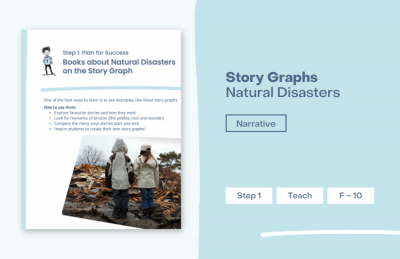
Term planners
Need more inspiration? Some of the incredible Seven Steps community have stepped up (see what we did there?) and offered to share their own term planners with you. We love what they do and fully support teachers who adapt the Seven Steps techniques and theory to their own needs. Here are two real-life planners from generous teachers to help inspire you to make your own.
Dawn Grant-Skiba’s writing routine is a sequence she uses over a 10-week period. Here she shares her routine plus an example of more in-depth planning for Step 2: Sizzling Starts. (NSW Stages 1, 2 and 3). Shared with permission from Dawn Grant-Skiba.
Jennifer Starink’s 31-lesson plan for narrative writing using the Seven Steps (NSW Yr 8). Shared with permission from Jennifer Starink and Mitchell High School, NSW.
Thanks, Dawn and Jennifer!
If you’d like to share your term planner or an Action Activity to help make life a little less stressful for teachers and schools impacted by the devastating bushfires contact the Seven Steps team by emailing us ([email protected]).
Reading and sharing stories
It can be easier to explain the impact of the Seven Steps when you have lots of examples to draw on.
We have free writing samples and exemplars on our Narrative Writing, Informative Writing and Persuasive Writing pages on Teacher Hub.
Try these free Seven Steps resources
Writing, reading, telling stories and communicating is a huge part of the healing process. We hope this set of resources helps in some way.
Think Tank
STEP Step 1: Plan for Success
PURPOSE Teach
RESOURCE TYPE Lesson Plan
YEAR 3–6
RELATED Creativity in the classroom
- Learn how to use brainstorming and mind-mapping techniques to generate and select great story ideas.
- Includes an editable mind map template.
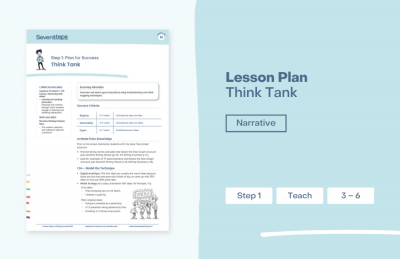
Five + 1 Senses
STEP Step 3: Tightening Tension
PURPOSE Teach
RESOURCE TYPE Lesson Plan
YEAR 3–6
RELATED Collaborate, create and celebrate great writing
- Learn how to use the Five + 1 Senses to generate ideas for a tension scene.
- Includes an editable brainstorming template.
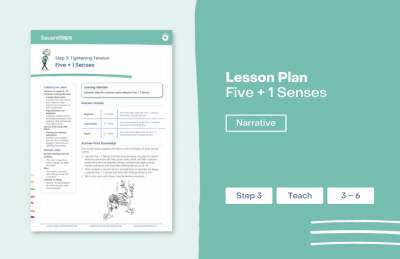
Through the Window
STEP Step 2
PURPOSE Apply
RESOURCE TYPE Template
YEAR F–2
- Develop your younger students’ creativity with this fun writing (and drawing) template.
- Use the prompt given or create your own – students will have a blast as they learn to write in an engaging way.
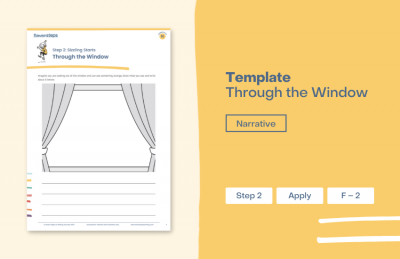
Deconstructed Recount
STEP Step 5: Show, Don’t Tell
PURPOSE Apply
RESOURCE TYPE Template
YEAR F–10
- Take recounts to the next level with this simple template that promotes descriptive writing.
- Students write and draw in the template to describe their holidays using the Five + 1 Senses.

More Teacher Hub resources
Narrative Texts Demonstrating the Seven Steps
STEP All Steps
PURPOSE Teach
RESOURCE TYPE List
YEAR F–10
- Show students examples of the Seven Steps techniques in published texts.
- This handy list is sorted by Step and annotated with notes about how each text demonstrates a particular Seven Steps technique.
- Selection includes picture books and chapter books, from classics to more recent titles.
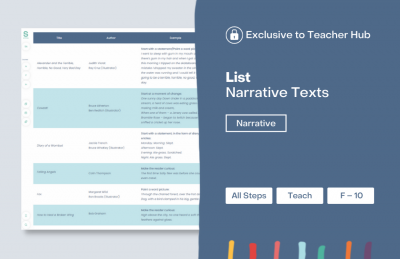
Informative Texts Demonstrating the Seven Steps
STEP All Steps
PURPOSE Teach
RESOURCE TYPE List
YEAR F–10
- Show students examples of the Seven Steps techniques in published texts.
- This handy list is sorted by Step and annotated with notes about how each text demonstrates a particular Seven Steps technique.
- Selection includes picture books, news articles and science comics.
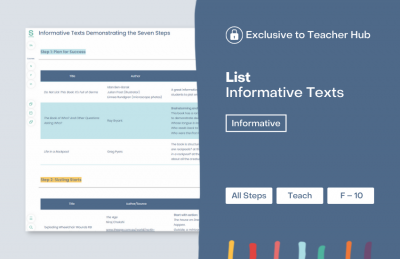

Become a Seven Steps member
